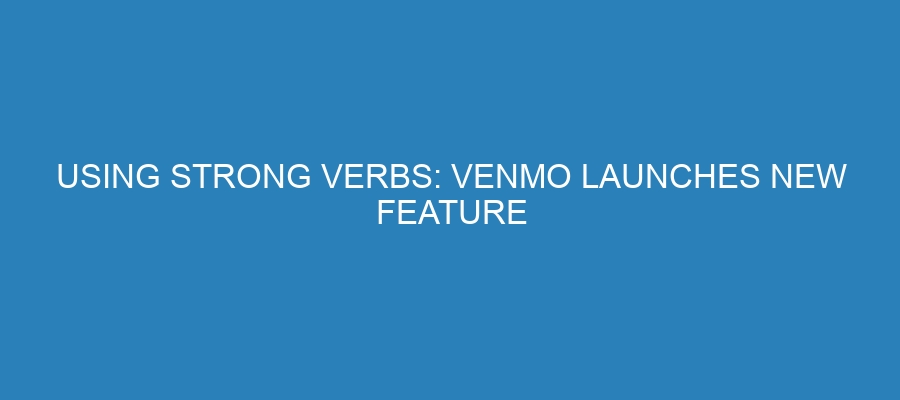Venmo Unleashes “Venmo Business Profiles 2.0”: Empowering Entrepreneurs with Enhanced Features
Venmo, the ubiquitous payment app known for its social feed and peer-to-peer transactions, boldly ventures further into the realm of small business with the launch of “Venmo Business Profiles 2.0.” This latest iteration reimagines how micro-businesses and entrepreneurs leverage the platform for commercial activities, introducing a slew of new features designed to streamline transactions, boost visibility, and foster customer engagement.
For years, Venmo has existed in a somewhat grey area for small business owners. While technically intended for personal use, many entrepreneurs adopted it to receive payments, benefiting from its ease of use and widespread popularity. However, this workaround lacked the professionalism and robust features required for sustainable business growth. Venmo Business Profiles, initially launched in 2019, aimed to bridge this gap, but the original offering felt limited.
Venmo Business Profiles 2.0 represents a significant upgrade, addressing many of the pain points experienced by early adopters. One of the most noteworthy additions is enhanced reporting and analytics. Businesses can now delve deeper into transaction data, tracking sales trends, identifying peak hours, and understanding customer behavior. This data-driven approach empowers businesses to make informed decisions about pricing, marketing, and overall strategy.
Another key feature is the revamped profile customization options. Businesses can now craft visually appealing profiles that reflect their brand identity. Enhanced imagery, customizable descriptions, and prominent call-to-action buttons allow businesses to tell their story and encourage engagement. These improvements transform the profile from a simple payment receiver into a miniature storefront.
The upgrade also prioritizes customer service. Venmo Business Profiles 2.0 integrates with email and phone support channels, ensuring that businesses can respond promptly to customer inquiries and resolve any issues that may arise. This responsiveness builds trust and fosters long-term customer relationships.
Beyond these core enhancements, Venmo Business Profiles 2.0 introduces several smaller but impactful features. These include:
- Improved Search Functionality: Customers can now more easily discover businesses using keywords and location-based searches within the Venmo app.
- Sharable QR Codes: Businesses can generate and display QR codes to facilitate quick and contactless payments.
- Transaction Notes Enhancements: Businesses can now add more detailed notes to transactions, providing customers with greater clarity and transparency.
Venmo’s move to strengthen its business profile offering reflects the growing demand for mobile payment solutions among small business owners. As traditional point-of-sale systems become increasingly costly and complex, apps like Venmo offer a simple and affordable alternative. This shift aligns with the broader trend of businesses embracing digital tools to reach new customers and streamline operations. If you are interested in getting a more robust payment gateway, you may want to research companies like Authorize.net that offer a wider range of business services.
FAQs: Unpacking Venmo Business Profiles 2.0
Q: Who is Venmo Business Profiles 2.0 designed for?
A: It’s tailored for small businesses, freelancers, entrepreneurs, and anyone who wants to separate their personal and professional Venmo activity. This includes artists, independent contractors, service providers, and retailers with a smaller customer base.
Q: How do I create or upgrade to a Venmo Business Profile 2.0?
A: Within the Venmo app, navigate to your settings and look for the option to create or switch to a business profile. The app will guide you through the setup process, which involves providing business information and verifying your identity.
Q: Are there any fees associated with using a Venmo Business Profile 2.0?
A: Yes. Venmo charges a standard transaction fee for payments received through a business profile. This fee is typically lower than traditional credit card processing fees, but it’s important to review the current fee schedule on Venmo’s website.
Q: Can I accept credit card payments with a Venmo Business Profile 2.0?
A: Yes. Customers can pay using their linked credit or debit cards, as well as their Venmo balance.
Q: Is Venmo Business Profiles 2.0 secure?
A: Venmo employs industry-standard security measures to protect user data and transactions. However, it’s important to practice safe online habits and be aware of potential scams.
Q: Can I use Venmo Business Profiles 2.0 for online sales?
A: While primarily designed for in-person and direct payment requests, you can integrate Venmo Business Profiles 2.0 with some e-commerce platforms through APIs (Application Programming Interfaces).
Q: How do I market my Venmo Business Profile to attract more customers?
A: Promote your Venmo Business Profile on your website, social media channels, and marketing materials. Encourage customers to follow you on Venmo and share positive reviews. Utilize Venmo’s search functionality to optimize your profile for relevant keywords.
Conclusion: Beyond Venmo – Expanding Your payment processing Options
Venmo Business Profiles 2.0 represents a significant step forward for small businesses seeking a convenient and affordable payment solution. The enhanced features empower entrepreneurs to manage transactions, track performance, and engage with customers more effectively. However, while Venmo offers a great starting point, it may not meet the needs of all businesses, especially those requiring more robust payment processing capabilities.
If you’re looking to scale your business and explore more comprehensive payment processing options, including credit card terminals, e-commerce integrations, and advanced reporting tools, consider contacting Payminate.com. They specialize in providing merchant processing solutions tailored to your specific business needs and can help you navigate the complexities of payment processing.

